Sweet or savory– and slightly terrifying –these specimen jars are fun to make and will give your dinner guests something to chew on.
Before we begin, let’s be clear about what we’re trying to accomplish, with a few ground rules for the project:
1. What good is a specimen jar if you can’t serve it at dinner? The contents of the jars should be genuinely edible, made out of real food. Plastic snakes and spiders are right out.
2. Make it tasty. While the appearance of the specimen jars may cause loss of appetite, the scent, by contrast, should be simply mouth watering. There are many ways to get there. Specimen jars can be prepared as an antipasto course (e.g., with preserved vegetables), as a soup appetizer, as a palate cleanser between courses, or a dessert course, depending on the ingredients chosen.
3. Work within the comfort zone of your guests. If your guests are super-omnivores, eager to eat the most challenging ingredients that you can get your hands on– whether that’s brains or balut or something far worse –then go right ahead. However, the point of this project is to make a dish that looks intimidating but actually consists of friendly ingredients. It’s possible to make a truly scary looking set of specimen jars that is (for example) strictly vegan or passes the even stricter dietary requirements that your child may present.
First, you’re going to need some jars. We suggest wide-mouth mason jars. It’s best if you can find a type that is smooth (not textured), at least on one side, for that laboratory appearance. Mason jars are designed to tolerate rapid temperature changes, and are an excellent choice for serving hot soup specimens. And, they’re available in several different sizes.
Next, you’re going to need some ingredients. In what follows, we’ll walk through some possible jar fillings.
Let’s start with some simple dessert jars. Here are three “exotic” types of canned fruit– lychee, mangosteen, and rambutan, all of which taste like they could be standard “fruit cocktail” ingredients, but look very different. While we would normally recommend using fresh ingredients, starting with canned (or jarred) goods really is a great shortcut to that not-quite recognizable “soaking in a preservative for years” look.
Lychee and longan (another “exotic” asian fruit) are both available fresh at our local markets, but the canned versions have a very alien appearance.
Finally, you need some sort of fluid “preservative.” For dessert, there are plenty of good options, depending on your taste. You could use sweetened iced tea for an effect much like bubble tea with the soft fruits at the bottom. Or lemon-lime soda with a dash of cola. Or lemonade. Or apple juice or white grape juice. Or, as shown here, mostly water with a splash of Italian syrup.
The end result is a bit ambiguous in appearance. What is that? Could those be preserved parts of gooseneck barnacles? Or tunicates of some sort? Coral polyps? You can encourage that mystery with a suitable label, as we’ll see later.
Here’s another goodie from the canned-foods section: Canned jackfruit, which has a texture somewhat like canned artichoke hearts– a soft yet fibrous vegetable –and is often found in Indian cooking. What’s even better, it has a passing resemblance to (damaged) brain tissue.
Raw sausages of almost any sort are good raw materials. Here, we take chicken breakfast sausage and slice it at the “knuckles” so that it bends while cooking. Add to hot soup broth, just before serving. Alternate suggestion: serve these “chicken fingers” (sorry– coudn’t resist) in a lesser quantity of thinned maple syrup.
Fresh bamboo shoots. Vegetable tentacles?
In the left jar are our jackfruit “brain” slices. In the middle jar, long beans and Shanghai noodles (top row). On the right, our fresh bamboo shoots.
On the left, boiled cauliflower with palm seeds. Top row: tapioca pearls and shanghai noodles. Bottom row: Hard boiled egg (carved) and thin, wide rice noodles.
Extra fat rice noodles, along with wood ear mushrooms and a couple more of the bamboo shoots.
On the left, mustard greens, in the middle cauliflower and lychee with a few mung bean sprouts, and on the right a much larger bamboo shoot.
And then, the good part. Many of these foods have an “ambiguous” appearance, and we rely on context– including labels –to help us determine what we’re looking at. We can take advantage of that by providing some creative misdirection in our labeling. You might ask– Is that really white coral? Or, better, is this really safe to eat?
Our paper labels were applied with spray adhesive, and darkened with a wet tea bag. (And that “coral?” Galangal.)
More of the array.
For best results, place the jars– just before serving –in an old-timey scientific cabinet.
Important safety tip: Jarred dishes like these are not preservedfor long term storage, they’re just in jars for appearance. Serve hot or cold, shortly after preparation.
You can find additional photos from our specimen jar project in this flickr set. If you make your own set of jars, we’d love to see the results in the Evil Mad Science Auxiliary.
This project is included in the food category in our Halloween Project Archive where you can find more ideas and recipes.




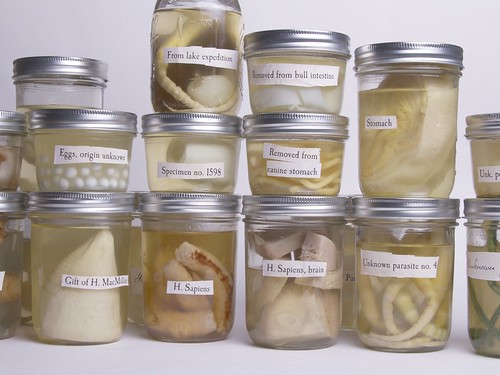
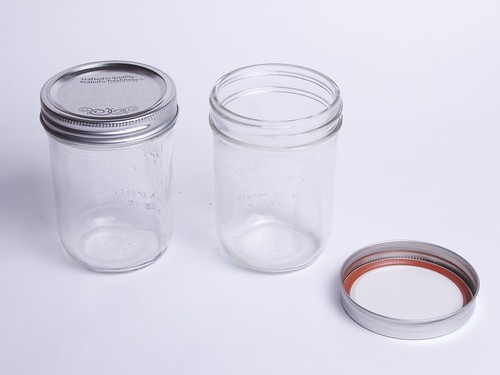
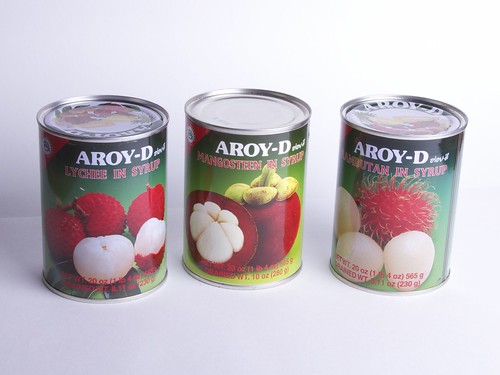

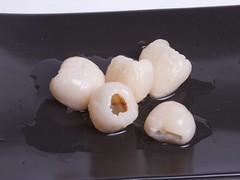

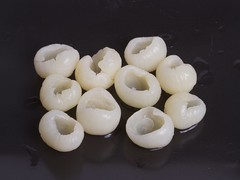

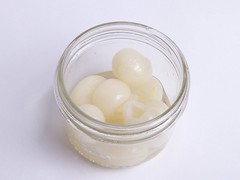
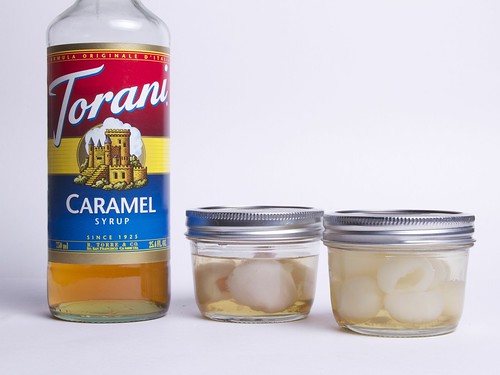
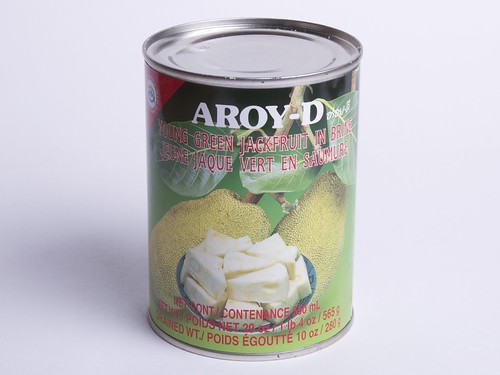
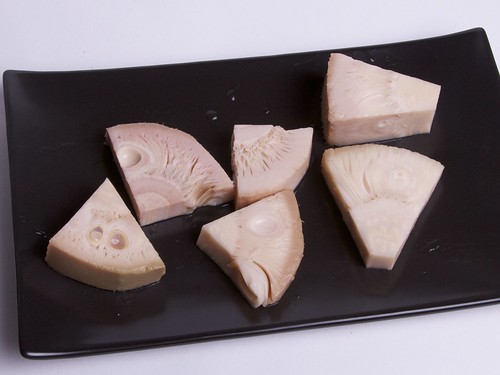
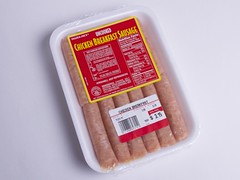
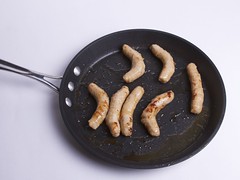
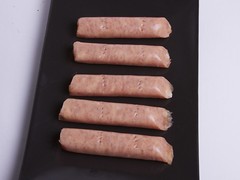
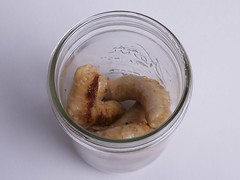
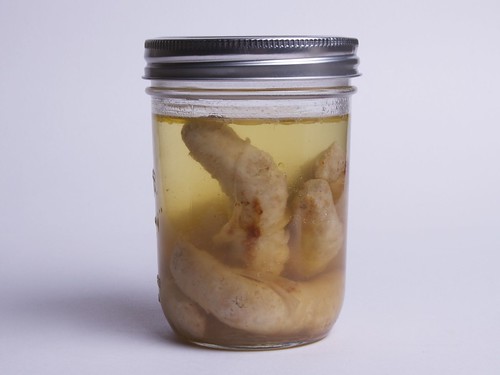
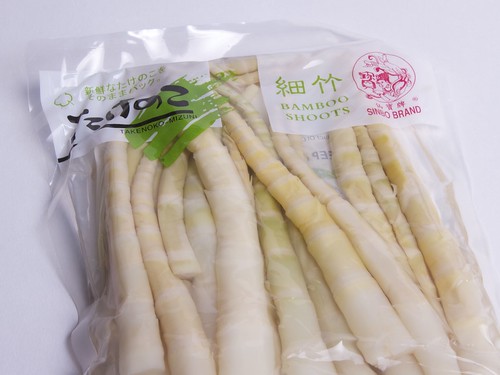

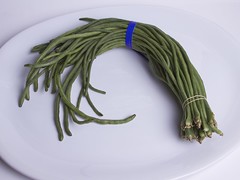
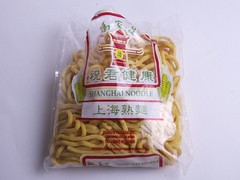
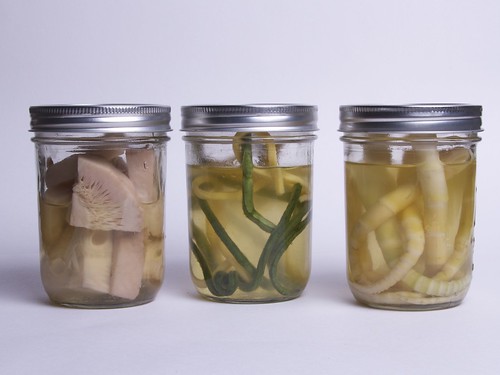
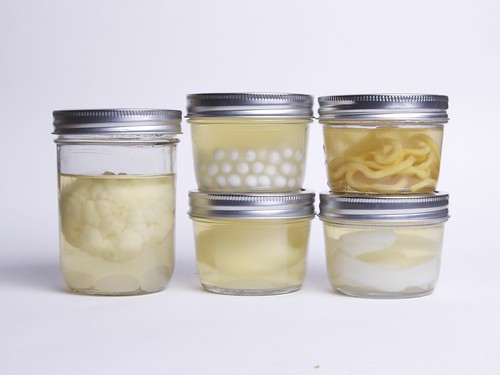
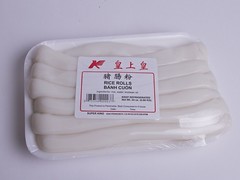
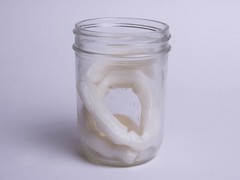
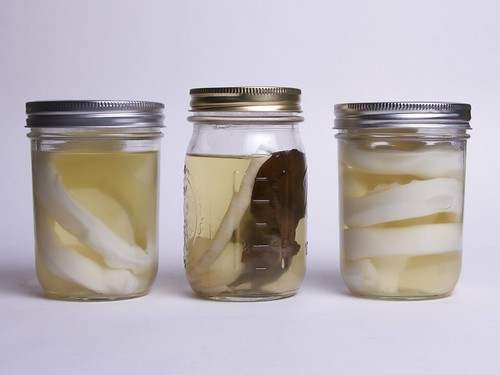
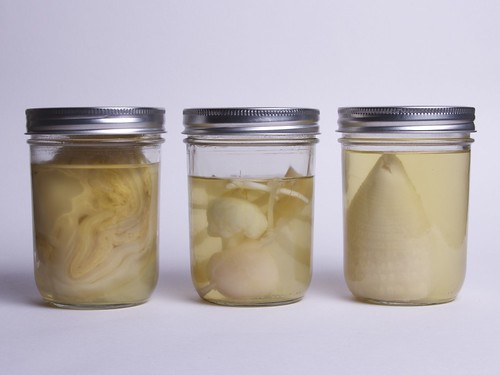
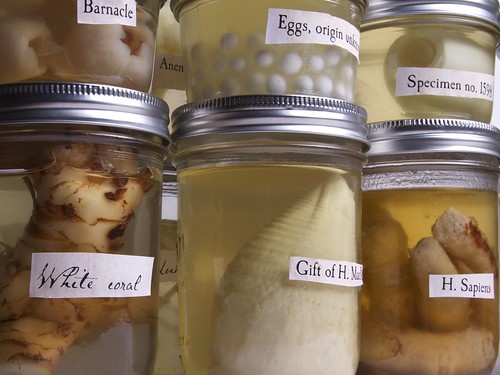

Whoa – those palm seeds look interesting. Don’t think I’ve seen those before. What do they taste like?
The palm seeds are actually my favorite of all these canned foods. They’re firm and gelatinous, very much like the center part of a jellybean. We first had them in dessert-like drinks at the local Malaysian restaurant, and learned to locate them in the markets after that.
Windell H. Oskay
drwho(at)evilmadscientist.com
http://www.evilmadscientist.com/
it’s Pulau Hitam, date palm. A tropical fruit, used in Southeast Asia for desserts. Sweet.
These are called "Attap chee," the fruit from Nypa Fruticans, which is not the same as the date palm, Phoenix dactylifera. Those are each from a different genus, but from within the taxonomic family of palm trees, Arecaceae.
Windell H. Oskay
drwho(at)evilmadscientist.com
http://www.evilmadscientist.com/
For those not familiar with them, water caltrops (aka buffalo nut, bat nut, devil pod) can probably be passed off as a jar of preserved bat heads.
Buddha’s Hand in vodka might work too – with the right people and the right label.
Awesome job as usual, guys! Will defiinitely be stealing some of these ideas :)
dot
Surrounded as I am daily by mad scientists, I am impressed by these! I think Dr. W would find some of these fascinating….
Peeled grapes in … something. Triple sec or rum, for adults, or maybe vodka. A sweetish syrup for kids. (They look like amphibian eggs, if they’re grapes with seeds.)
Just a thought, on the sausages – I noticed in some pictures, the browning from the cooking looks not quite "real" – if you microwave sausages, they don’t get the "burnt" sides, and are an "appealing" grey colour… Just an alternative. :)
these are superb, what a a great idea!!
Such fun ! and these look the part
Love, Riti